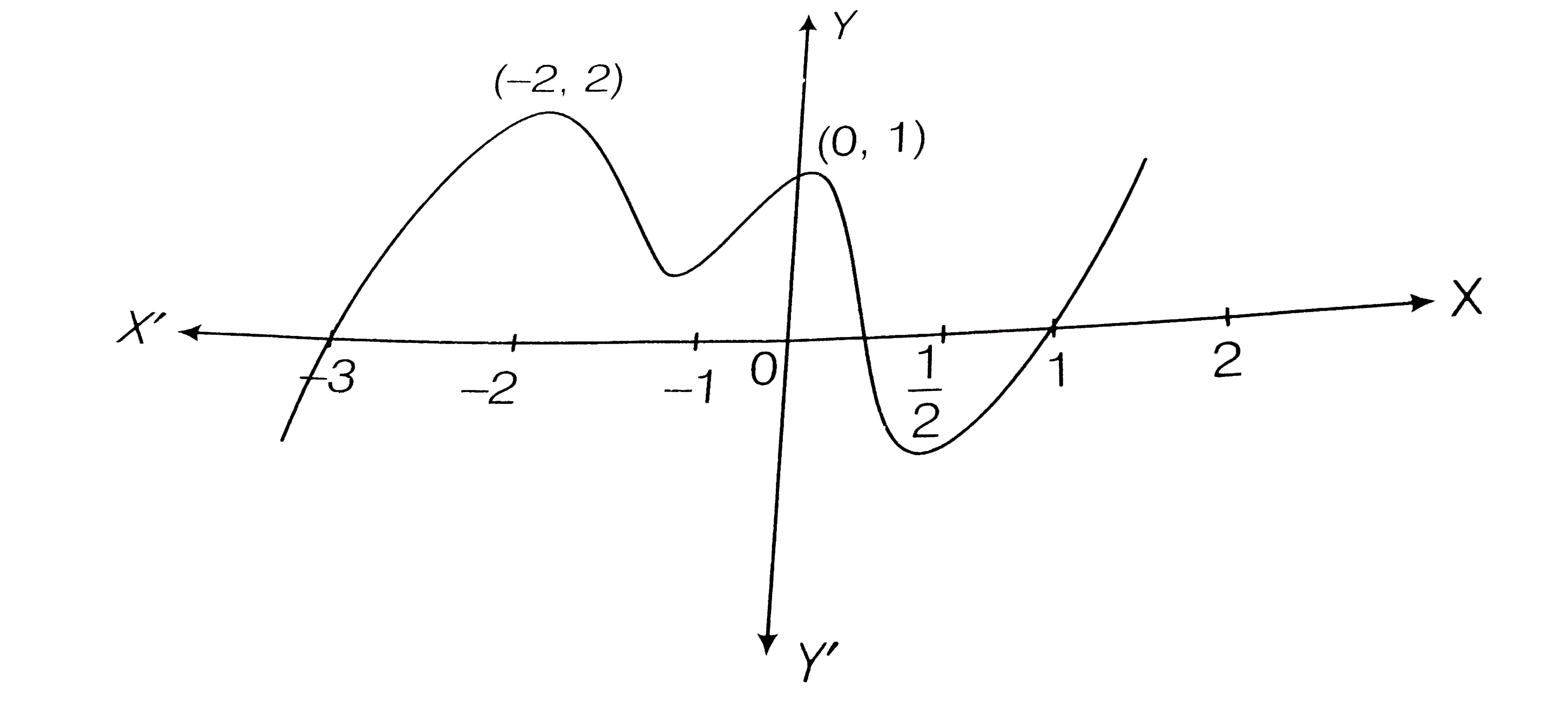Given P(x) =x4+ax3+bx2+cx+d such that x=0 is the only real root of P'(x) =0 . If P(-1) lt P(1),then∈the∫erval[-1,1]
P(−1) is the minimum and P(1) is the maximum of P
P(−1) is not minimum but P(1) is the maximum of P
P(−1) is the minimum but P(1) is not the maximum of P
Neither P(−1) is the minimum nor P(1) is the maximum of P.
The correct Answer is:B
Step by step video, text & image solution for Given P(x) =x^(4) +ax^(3) +bx^(2) +cx +d such that x=0 is the only real root of P'(x) =0 . If P(-1) lt P(1), then in the interval [-1,1] by Maths experts to help you in doubts & scoring excellent marks in Class 12 exams.
Topper's Solved these Questions
- BOOK - MODERN PUBLICATIONCHAPTER - APPLICATIONS OF DERIVATIVESEXERCISE - CHAPTER TEST (1)12videos
APPLICATIONS OF DERIVATIVES
- BOOK - MODERN PUBLICATIONCHAPTER - APPLICATIONS OF DERIVATIVESEXERCISE - CHECK YOUR UNDERSTANDING10videos
APPLICATIONS OF DERIVATIVES
- BOOK - MODERN PUBLICATIONCHAPTER - APPLICATIONS OF THE INTEGRALS EXERCISE - CHAPTER TEST12videos
APPLICATIONS OF THE INTEGRALS
Similar Questions
Given P(x)=x4+ax3+cx+d such that x=0 is the only real root of P'(x)=0.IfP(1)<P(1) , then in the interval [1,1] . (1) P(1) is the minimum and P(1) is the maximum of P (2) P(1) is not minimum but P(1) is the maximum of P (3) P(1) is the minimum but P(1) is not the maximum of P (4) neither P(1) is the minimum nor P(1) is the maximum of P
View SolutionLet P(x)=x4+ax3+bx2+cx+d, where a,b,c,d∈R.Suppose P(0)=6,P(1)=7,P(2)=8andP(3)=9, then find the value of P(4).
View Solution
Knowledge Check
- Question 1 - Select One
Given P(x) =x4+ax3+bx2+cx+d such that x=0 is the only real root of P'(x) =0 . If P(-1) < P(1), then in the interval [−1,1]
AP(-1) is the minimum and P(1) is the maximum of PBP(-1) is not minimum but P (1)is the maximum of PCP(-1) is the minimum and P(1) is not the maximum of PDneither P(-1) is the minimum nor P(1) is the maximum of P - Question 2 - Select One
Given P(x) =x4+ax3+bx2+cx+d such that x=0 is the only real root of P'(x) =0 . If P(-1) lt P(1),then∈the∫erval[-1,1]
A(a) P(-1) is the minimum and P(1) is the maximum of PB(b) P(-1) is not minimum but P(1) is the maximum of PC(c) P(-1) is not minimum and P(1) is not the maximum of PD(d) neither P(-1) is the minimum nor P(1) is the maximum of P - Question 3 - Select One
If x2+x+1 is a factor of ax3+bx2+cx+d, then the real root of ax3+bx2+cx+d=0 is
A−d/aBd/aCa/dDnone of these
If P(x)=x4+ax3+bx2+cx+d,P(1)=P2=P(3)=0 then find P(4)
View SolutionLet P(x)=x4+ax3+bx2+cx+d, where a,b,c,d∈R . Suppose P(0)=6,P(1)=7,P(2)=8 and P(3)=9, then find the value of P(4)
View SolutionLet P(x)=x4+ax3+bx2+cx+d, where a,b,c,d∈R. Suppose P(0)=6,P(1)=7,P(2)=8 and P(3)=9, then find the value of P(4)
View SolutionIn the given figure graph of y=P(x)=ax5+bx4+cx3+dx2+ex+f, is given.

The minimum number of real roots of equation (P''(x))2+P'(x).P'''(x)=0, isView Solutionx2+x+1 is a factor of ax3+bx2+cx+d=0, then the real root of above equation is (a,b,c,d∈R)
View Solution

